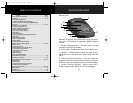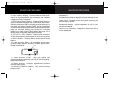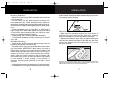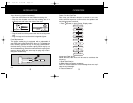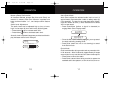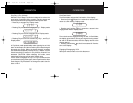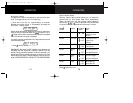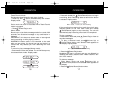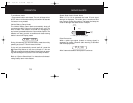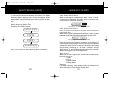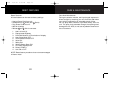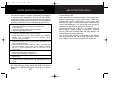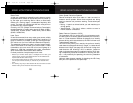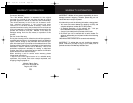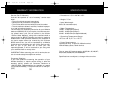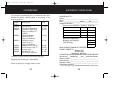
SPEED MONITORING TECHNOLOGIES
Other Speed Detection Systems
Several techniques other than radar or laser are used to
measure vehicle speeds. When these methods are being
used, no detector can provide a warning. These techniques
include:
• Pacing - A patrol car drives behind you and matches your
driving speed.
• Vascar/Aircraft - The time it takes a vehicle to travel a
known distance is measured.
Radar Detector Detectors (VG-2)
The Interceptor VG-2, or simply VG-2, is a microwave receiv-
er used by police to detect signals radiated by the local oscil-
lator of a radar detector. Because its purpose is to identify
persons driving with radar detectors, the VG-2 is known as a
“radar detector detector”.
The VG-2 is the primary tool used by the police to identify
radar detector equipped vehicles. If caught, in a state where
detectors are illegal, (see page 25), drivers risk losing their
radar detector and receiving a fine. In addition, instant-on
radar is almost always used in combination with a VG-2, leav-
ing unsuspecting motorists vulnerable to receiving two tick-
ets — one potentially for speeding, the other for possession
of a detector.
Having a radar detector capable of detecting the VG-2 may
alert you to the presence of a speed trap.
27
SPEED MONITORING TECHNOLOGIES
26
Radar Facts
A radar gun operates by transmitting radio waves at certain
frequencies which reflect off objects and are then picked up
by the radar gun’s receiving section. When a radar beam
reflects off a moving target, a measurable frequency shift
occurs. The radar unit converts this shift into miles per hour
to determine your vehicle’s speed.
Currently, the FCC (Federal Communications Commission)
permits operation of traffic radar guns at X Band (10.500 -
10.550 GHz), K Band (24.050 - 24.250 GHz), and Ka Band
(33.400 - 36.000 GHz).
Laser Facts
It’s well documented that many radar guns cannot reliably
provide the speed of a targeted vehicle that is traveling in a
group of vehicles. In contrast, a laser gun can target a spe-
cific vehicle out of a line of traffic and determine its speed.
The advantage of laser over radar in terms of target identifi-
cation is the result of the laser gun’s narrow beam. A radar
transmission can cover more than a four-lane highway at a
distance of 1,000 feet, compared with a laser transmission
which covers about 6 feet at the same distance.
For best protection, keep these points in mind:
• Because your vehicle’s license plate or headlights are the laser gun’s
primary targets, mounting your Whistler detector on the dashboard can
improve laser detection at short range.
• Do not follow closely behind any vehicle you cannot see through. If you
can’t see past a vehicle ahead of you, chances are your detector won’t
either.
• The receiving range of your laser detector will not be the same as a radar
detector. Laser guns are most often used at short range.
1780 10/4/00 9:26 AM Page 29



